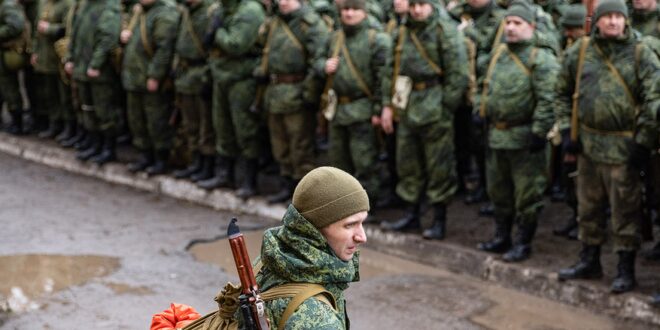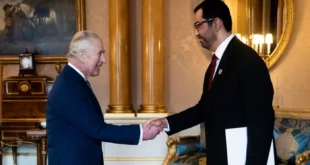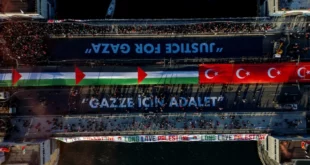Exactly two years ago, a “partial mobilization” was declared in Russia. The authorities were forced to do so because of the catastrophic situation at the front, where the Ukrainian Armed Forces, taking advantage of the exhaustion of Russian forces, were advancing in two directions at once – in the Kharkov and Kherson regions. Rumors of a new wave of mobilization have been circulating continuously since then, but especially actively – after the Ukrainian offensive in the Kursk region. The acute shortage of soldiers is indicated by the return of the wounded to the front, and the inability of the Russian Armed Forces to drive the Ukrainian army out of the Kursk region, and the active use of untrained conscripts. According to experts, Russia could mobilize another 300 thousand people, but there is nothing to equip and supply them with, and the mobilization itself is fraught with enormous political costs, because those who for one reason or another obediently agreed to go to the front have already been mobilized, and now this process will be much more difficult.
August and early September were marked by a fairly rapid offensive by the standards of the Russian-Ukrainian war by the Russian Armed Forces in the Pokrovsk direction in the Donetsk region. Nevertheless, Z-authors, reporting on successes, constantly complain about the lack of personnel and exhaustion of the advancing group. In addition, in recent months, there have been more frequent cases of sending untreated wounded to the front and transferring specialists such as UAV operators and even representatives of other types of troops to the infantry ( 1 , 2 ).
All these alarming trends are forcing pro-war bloggers to talk about the need for a new wave of mobilization, especially since in Ukraine this process is continuing with renewed vigor after the adoption of the corresponding law on sanctions for draft dodgers. According to WSJ sources , the Russian command also spoke to Putin about the need for mobilization, more than six months ago.
Russian representatives of various levels of government continue (to the displeasure of the Z-public) to assure the public that a new mobilization is not planned ( 1 , 2 , 3 ), and to report on the ongoing recruitment of contract soldiers (which is stimulated by a constant increase in payments ). Perhaps the Russian leadership expects to fulfill at least the immediate tasks of the “SVO” (for example, the complete capture of the Donetsk region) without declaring forced mobilization.
The Kremlin’s calculations, apparently, were not even affected by the breakthrough of the Ukrainian Armed Forces into the Kursk region – according to the assessment of Ukrainian military observer Konstantin Mashovets, the Russian command managed to assemble a group of 35.5 thousand people in this direction in a few weeks by attracting reserves from calmer sections of the front. As a result, Russian troops even went on the counteroffensive and were able to regain control over several populated areas, although the superiority created in this way over the Kursk group of the Ukrainian Armed Forces cannot be called overwhelming.
Personnel
For now, the pace of replenishment allows us to cover losses, according to the Conflict Intelligence Team (CIT) research group. “There was a difficult period in the first half of the year, when the flow of new recruits was not enough to make up for losses and create new units. But by increasing bonus payments, it seems that this problem was solved (we see growth in the second quarter, in the third there was even more money, and the flow probably increased even more). How much this will help in the long term is a question. We can return to it closer to the end of the year, before that moment the situation is unlikely to become threatening. The only option when there is a need for mobilization is the encirclement/destruction of a large group of troops. But the realities on the battlefield make such a development of events almost improbable,” the experts conclude.
Military analyst Yan Matveyev adds that even if mobilization had taken place, it would not have solved the immediate tasks of the Russian Armed Forces:
“I think that even the second wave of mobilization does not guarantee the Russian army’s capture of the Donetsk region. It is not enough to simply gather a lot of infantry. And they will not gather an inordinate amount. Perhaps another 300 thousand. But this is less than the number of contract soldiers last year, if we are to believe the calculations. Kursk region – perhaps. But here, even without mobilization, the Russian military can cope if they allocate more forces and resources.”
True, in this case the fate of those mobilized from the previous wave remains unclear. Their wives are planning to resume protests after a pause and demand that their husbands return home. Perhaps the most famous mobilized soldier on social networks, the author of the channel “Vault 8. Shelter No. 8”, complains about the lack of a decision on their replacement at the front and counts his fellow soldiers who have earned injuries and illnesses in the “zone” over two years. Yan Matveyev is sure that such a long stay at the front has a detrimental effect on the mobilized. “On the one hand, soldiers become experienced, but in other respects – negatively, of course. Fatigue accumulates, both physical and psychological. Negative effects such as fatalism develop. In general, nothing good.”
The CIT believes that this problem is not yet critical for the Russian army: “Mobilized troops are being used somewhat less in assault operations; fresh volunteer contract soldiers are mainly used for this. Thus, the factor of fatigue of the troops has a lesser impact. Plus, strict or even more precisely, cruel discipline – all these pits, basements, etc. – so far allows maintaining order in the troops. The known cases of desertion by entire units can literally be counted on the fingers of one hand, and this is one of the characteristic signs of a tired army.”
If the Russian leadership decides to declare mobilization, it risks encountering the same difficulties as during the “first wave” two years ago, from outdated mobilization data to a lack of resources to house, equip, and train new recruits.
At that time, Russia faced the inability to digest such a large number of people at once and outdated military registration and enlistment office databases. This led to the mobilization of the sick and unfit for service, whose stories were regularly reported by the media, CIT recalls.
“To solve the second problem, we decided to create electronic registers of conscripts and summonses. In theory, this will allow the second wave to be carried out more “smoothly”. We will be able to see how efficient the system is during the autumn draft – the register will start working on November 1. Probably, at least in a number of regions, primarily in Moscow, the system will function, but whether it will be possible to make it work for all regions is a big question.
It is also unclear how effectively the restrictive measures will work, such as bans on traveling abroad, driving vehicles, etc. – they will require coordination between several agencies at once, and this has always been a big problem for the system.”
Restrictive measures such as bans on travel abroad or driving vehicles will require coordination between several agencies, which has always been a problem for the system.
In addition, potential mobilized people will try to avoid conscription, says Grigory Sverdlin, head of the organization “Go to the Forest”:
“We see that every legislative initiative, such as the register of electronic summonses, increasing fines for failure to appear at the military registration and enlistment office, or fines for failure to provide information about military personnel, has caused an increase in appeals from people who are subject to military service and with every new legislative initiative think about how they can avoid mobilization.
So I have no doubt that people will actively try to avoid mobilization simply because so many are tired of the war and do not believe that it will end soon.
But whether people will be able to avoid mobilization more successfully is a question to which I do not have a clear answer. It is unknown how the unified register of summonses and the unified register of conscripts, which they want to launch in the fall, will work.”
According to Sverdlin, if the authorities are able to synchronize the databases of tax bailiffs, traffic police, border service and military registration and enlistment offices, it will be more difficult to avoid mobilization – those who receive a summons will not be allowed to travel abroad, drive a car, take out loans from a bank, or buy or sell real estate. But there is no certainty that such synchronization will work well.
“The main problem of the new wave of mobilization is the lack of people,” says Yan Matveyev. “Right now they are actively raking out those who are ready to go fight for money. That is, it will be much more difficult to find people for forced mobilization. And here the security forces may not have enough capabilities to organize everything quietly and quickly. There will be raids, conflicts and protests all over the country.”
According to the CIT, the gradual recruitment of contract soldiers seems more preferable also from the point of view of the lack of resources for “processing” a large number of mobilized personnel:
“At the moment, the problem has been solved by recruiting for money. At the same time, this reduces the pressure on the authorities, since people make the decision themselves – here, even if they are fathers of four or more children, there are no questions, but in the case of mobilization, there would be questions. This provides a stable influx of 20-30 thousand people per month, which the system easily digests.”
Yan Matveyev agrees that it will be difficult to provide the mobilized with everything they need. “As for the stock of uniforms and everything necessary, I think the situation has not changed at all. Probably, during the second wave, the mobilized will simply be paid some starting money right away so that they can buy everything for themselves,” he suggests.
Technique
Another problem that will inevitably arise in connection with the proposed new mobilization is the shortage of weapons and military equipment. OSINT analysts regularly record the depletion of stocks of tanks , armored fighting vehicles and artillery using satellite images . In addition, the de-mothballing of even existing stocks is limited by the capacity of repair plants and the condition of the remaining vehicles and is barely capable of replenishing equipment losses at the front. Under these conditions, potential new mobilization units will not resemble either the regiments of the first wave, or even less the “pre-war” brigades and divisions.
“During the mobilization, a significant amount of weapons reserves were raked out to fill the new units with equipment; over the next two years, they were depleted even more. If a second wave were to be announced now, the new units would effectively be rifle units , or motorized at most ,” the CIT believes.
“The Russian army is already switching to infantry assault tactics, when servicemen attack in small groups without the use of equipment. The numerical advantage is making itself felt, and the tactics are working. They will probably continue to be actively used,” Yan Matveyev suggests.
Despite this, experts agree that if necessary, Russia will be able to mobilize another 300,000 people. “If mobilization is necessary, then from the point of view of political stability, another 300,000 are unlikely to seriously shake the regime,” CIT believes.
From the point of view of political stability, another 300 thousand mobilized people are unlikely to seriously shake the regime
“The screws have been tightened even more in two years, the protest of relatives of those mobilized was successfully suppressed, relatives of conscripts were not even particularly indignant in Kursk Oblast,” analysts explain. At the same time, according to Yan Matveyev, “it will not be possible to collect any more painlessly. Either everyone must be paid, or repressions will be needed.”
Economy
Of course, we cannot ignore the economic aspect of mobilization. In a situation where the unemployment rate in Russia is reaching historic lows, and regional authorities are banning migrants from working in various fields, the one-time withdrawal of hundreds of thousands of able-bodied men from the economy could lead to unpredictable consequences. Especially if we assume that if mobilization is announced, as last time, tens of thousands of men will go abroad.
“Well, let’s say they can mobilize 200-300 thousand. If these are people with skilled professions, then this will deal a very serious blow and slow down the growth rates in key industries, which will lead to a decline in GDP,” economist Vladimir Milov reasons. “If they take anyone, will they have anyone left after these 2.5 years? After all, they have mowed down a lot of people of medium qualifications without any additional skills in the meat storms and mobilization.”
This is one of the reasons why it is preferable for the authorities to recruit contract soldiers, since the value of the average “volunteer” for the economy is lower, CIT believes:
“Companies take “people from the street” to use them to fulfill the plan , and not their own personnel. No matter how it sounds, the “cost” of a hypothetical unemployed debtor and the last combine operator in the village for business, and therefore for the economy, is different. Since mobilization is a lottery, the chance of losing a specialist is much higher. And it’s one thing to find a replacement for 30 thousand people a month, and another thing to find a replacement for three hundred.”
Companies are taking “people off the street” to help meet their contract recruitment quotas
Thus, a new wave of mobilization, even if it is announced, risks encountering problems of mass evasion and shortages of weapons, equipment and military hardware, and could also deal a significant blow to the Russian economy. Perhaps this is why Vladimir Putin, on whom the decision ultimately depends, is in no hurry to make it, hoping to limit himself to the ongoing recruitment of contract soldiers.
However, one cannot rule out the risk that the negative trends with the shortage of personnel in the Russian army will sooner or later result in a large-scale defeat at the front. There are currently no visible prerequisites for such a development, but two years ago few could have predicted the Ukrainian counteroffensive in the Kharkov region, which served as a trigger for the first wave of mobilization. The experience of that time showed that delaying mobilization only exacerbated the systemic problems associated with it – and now the Russian leadership risks repeating this experience.
 Eurasia Press & News
Eurasia Press & News



